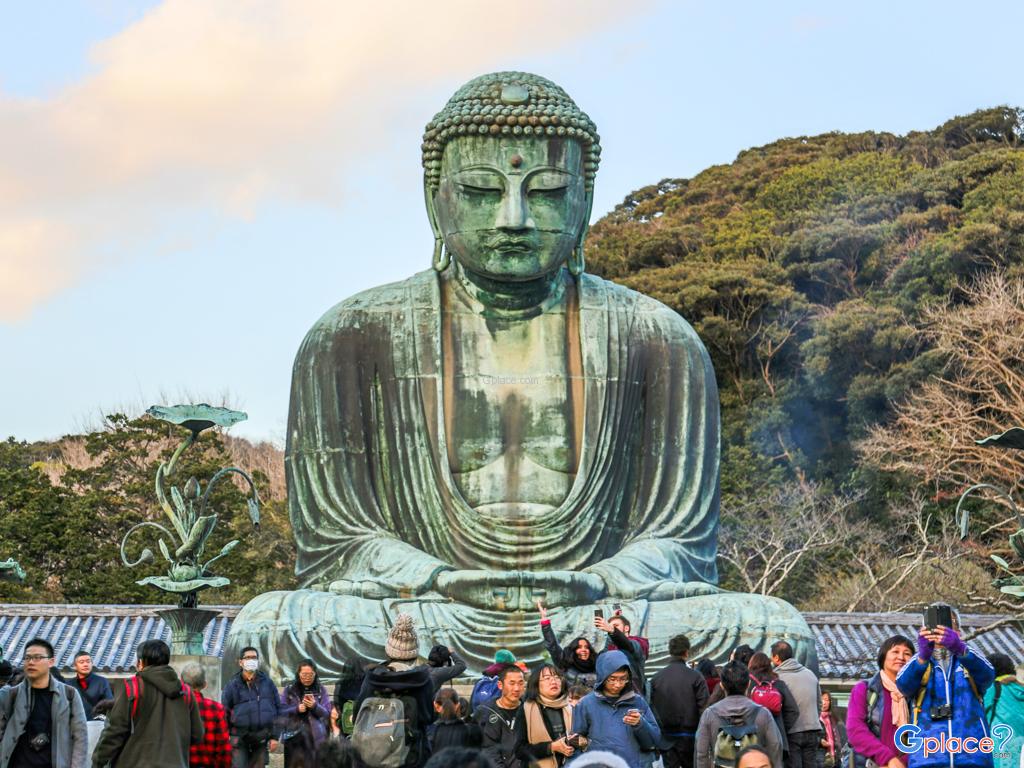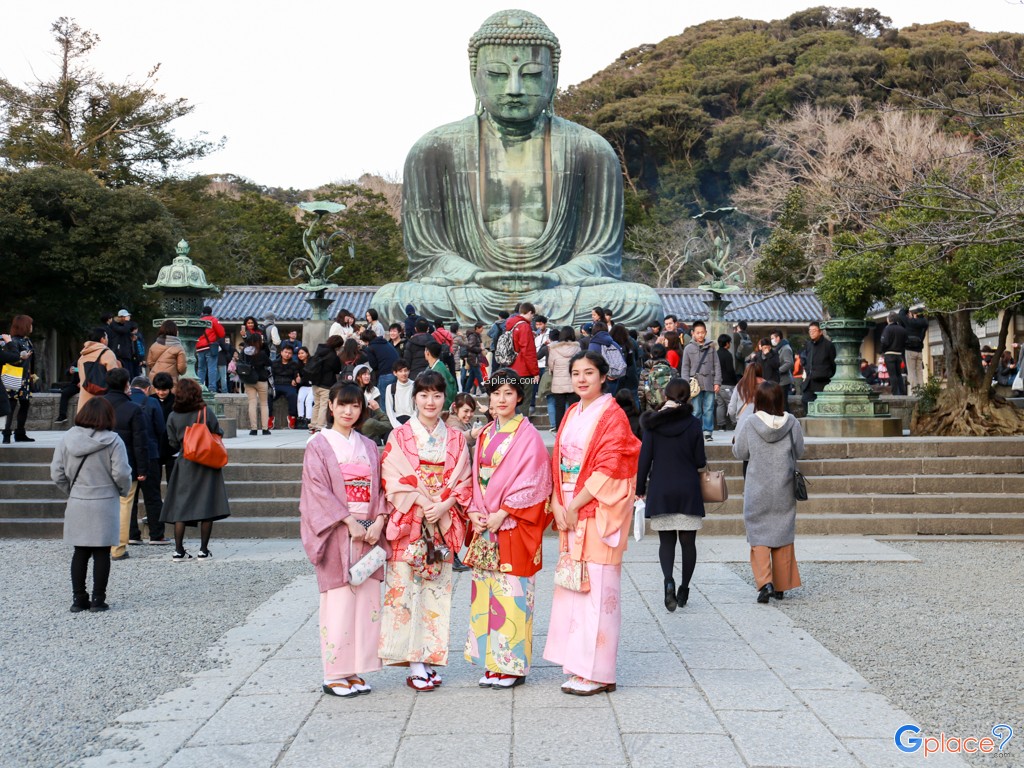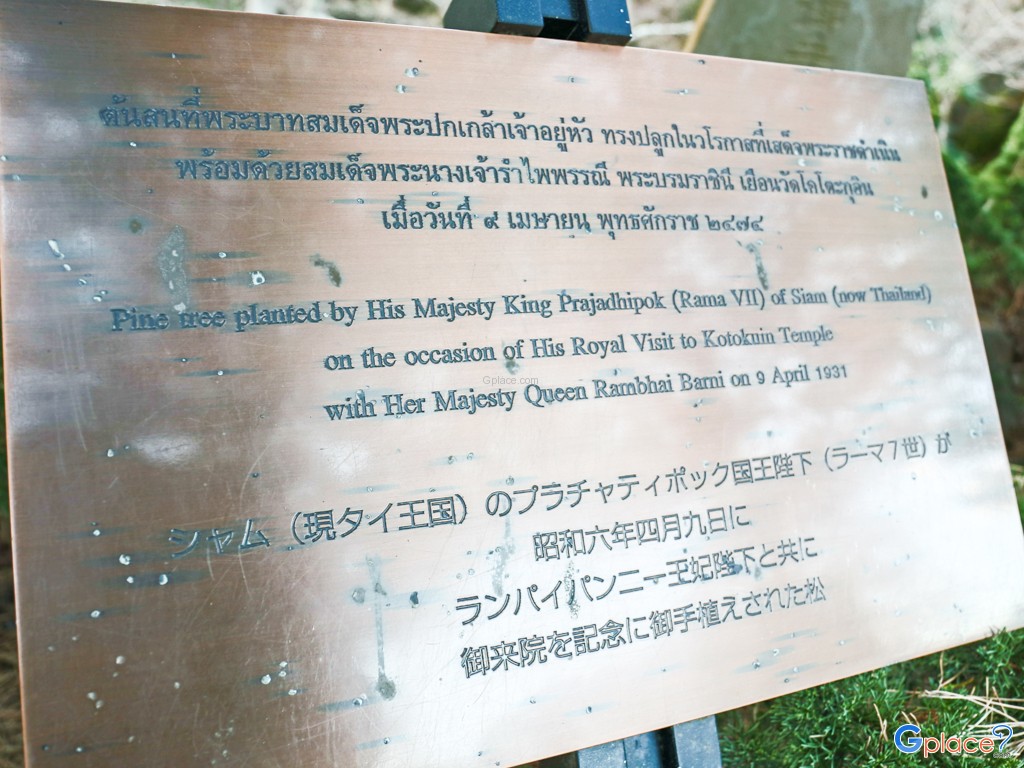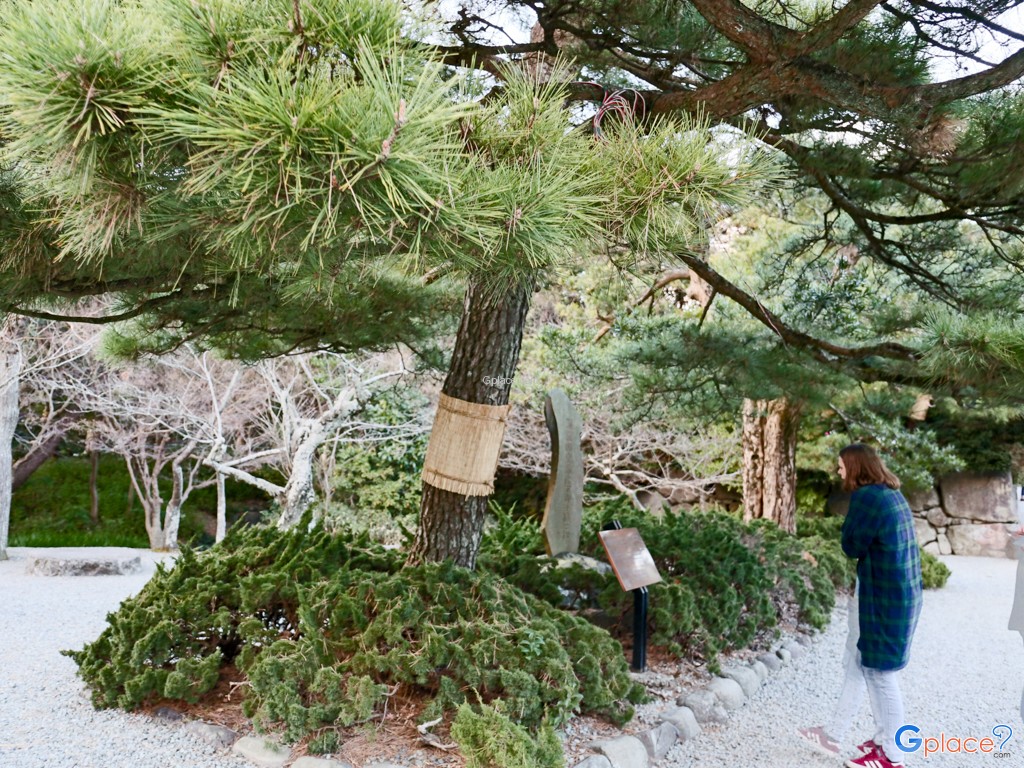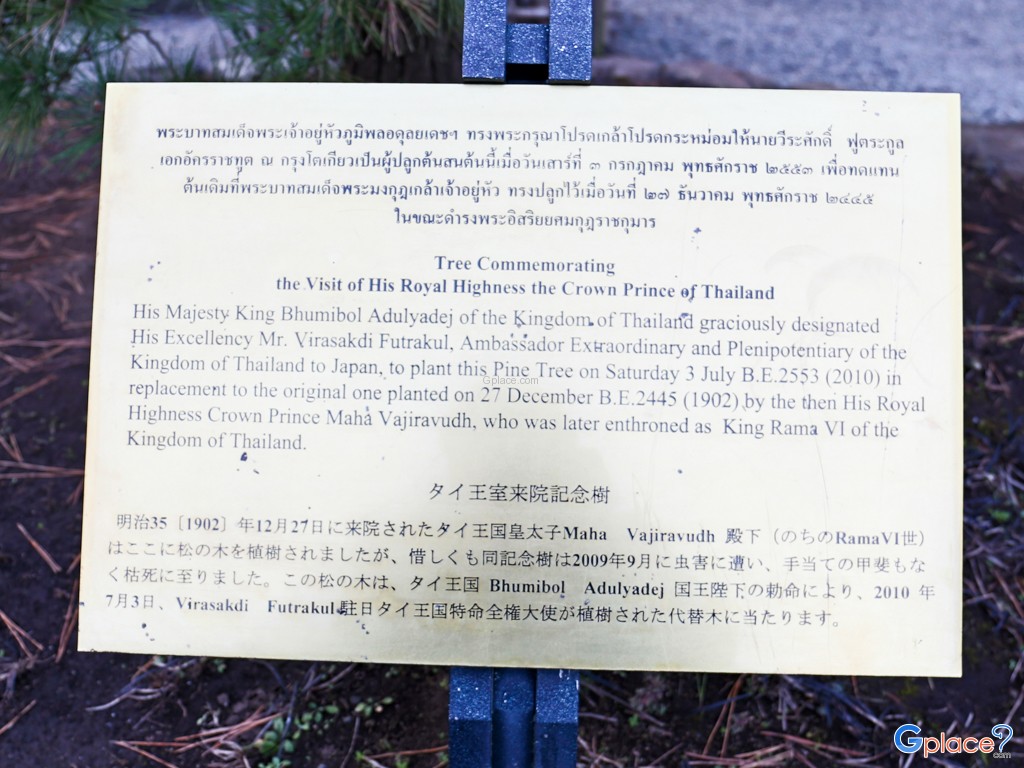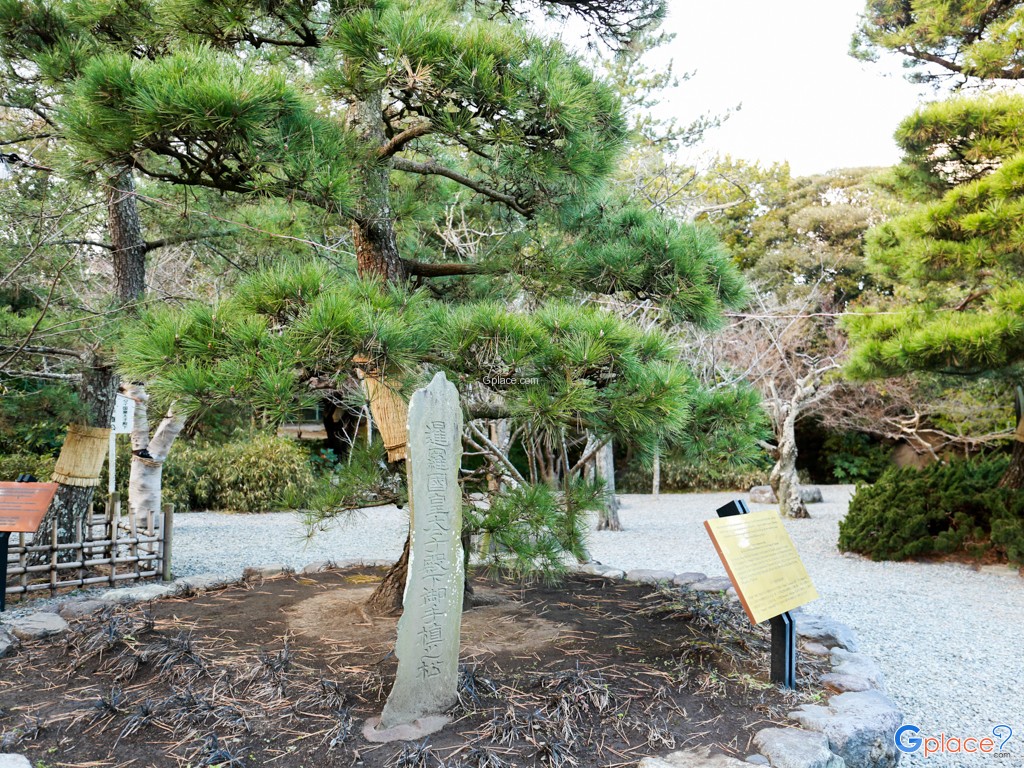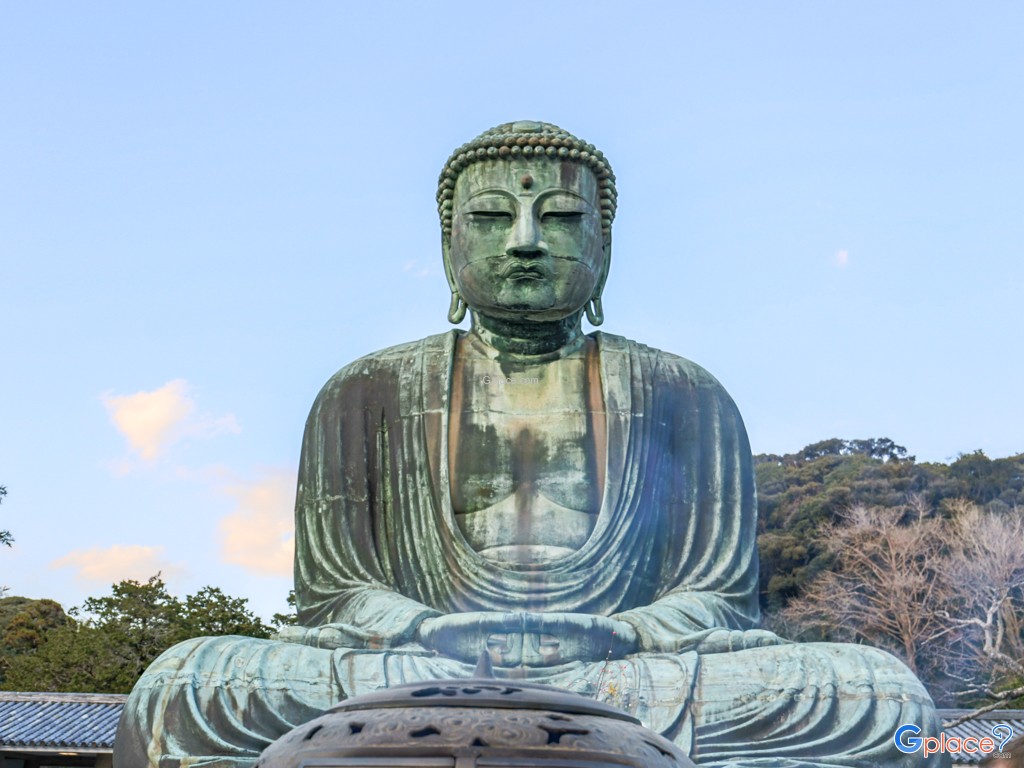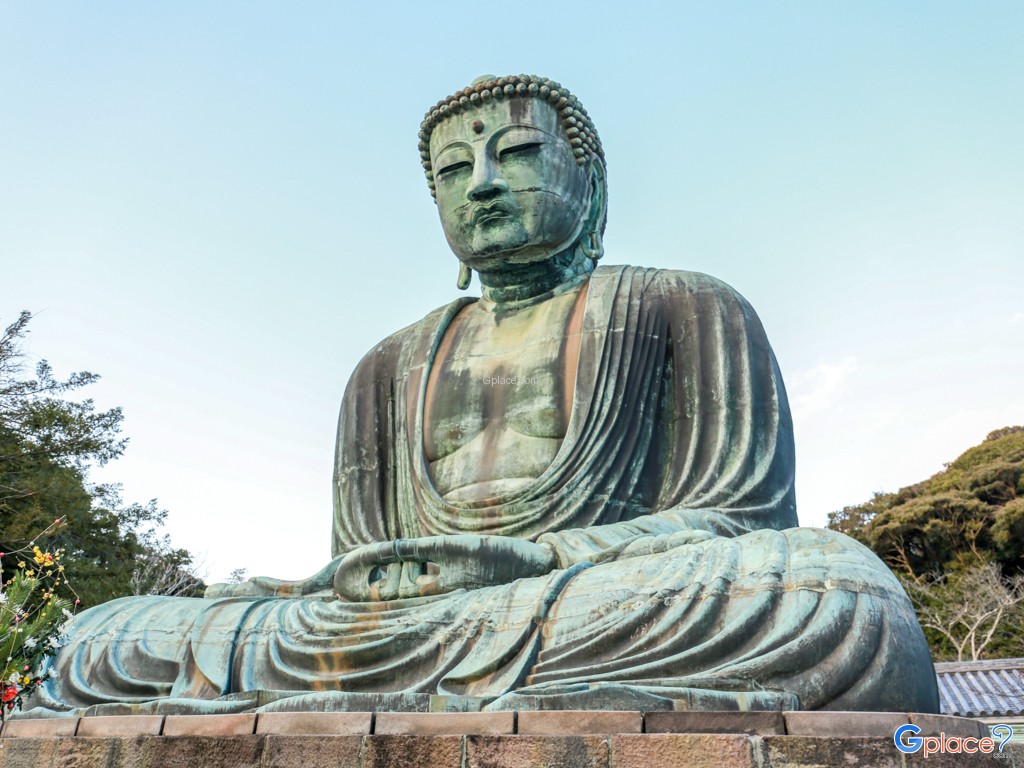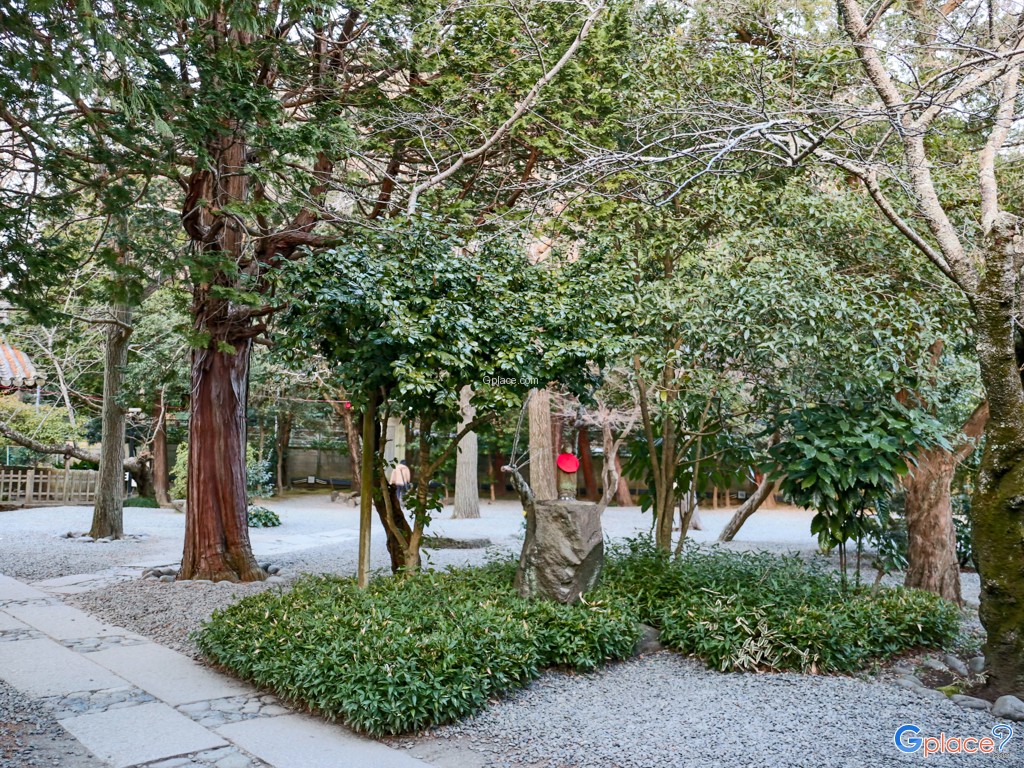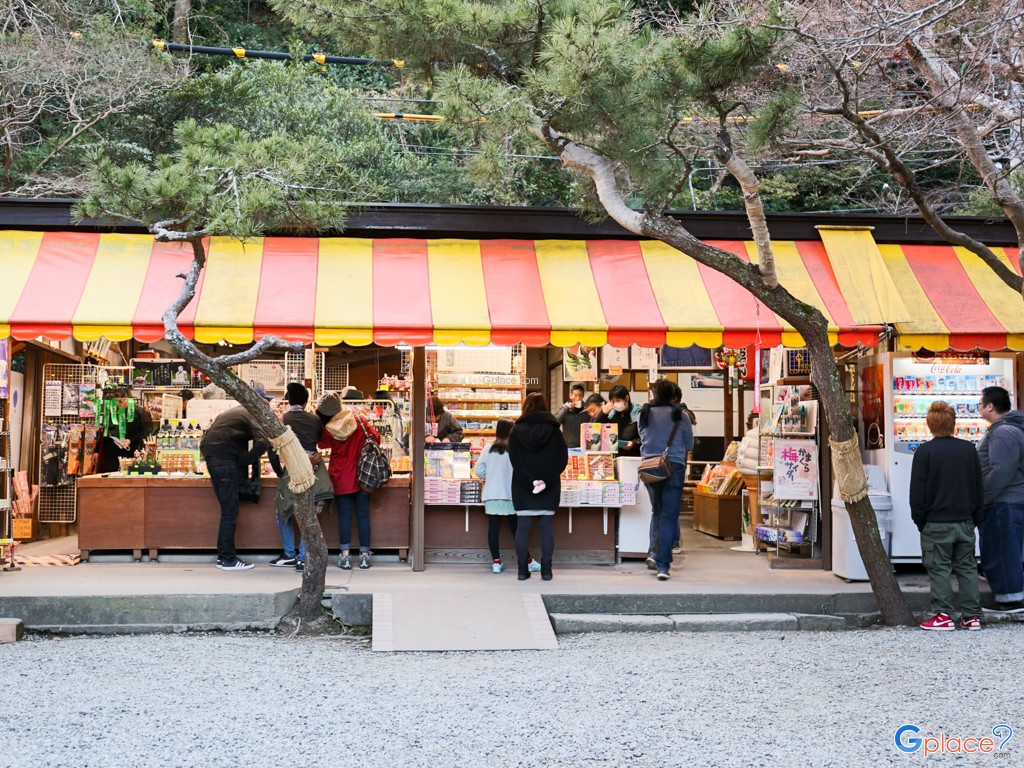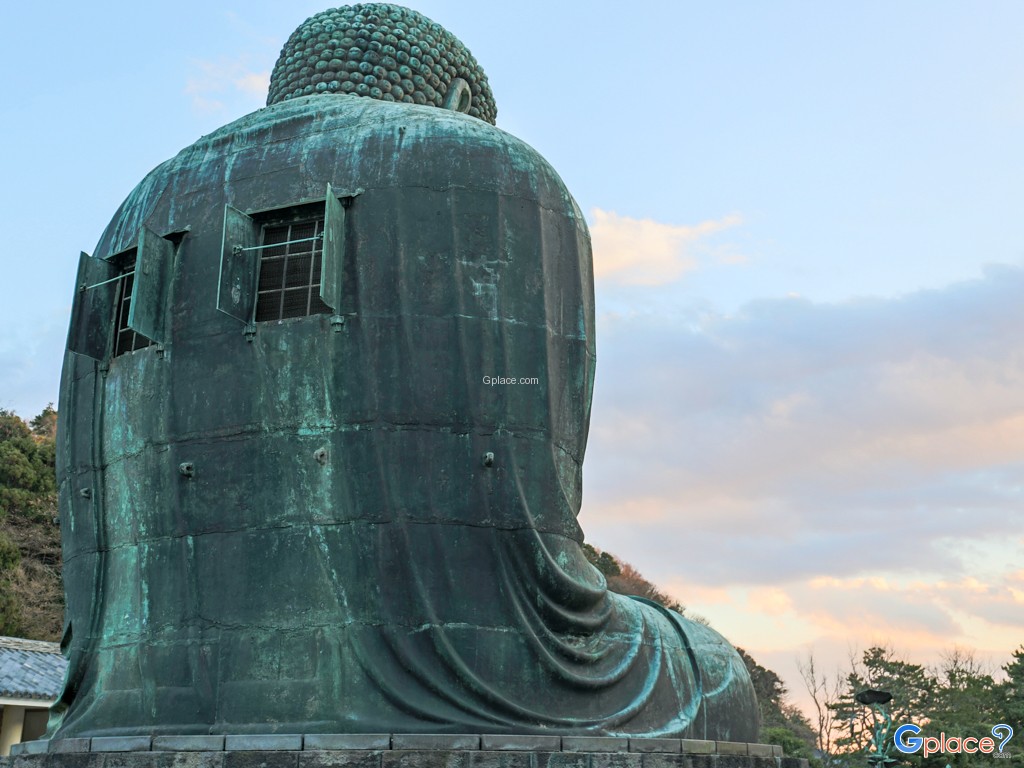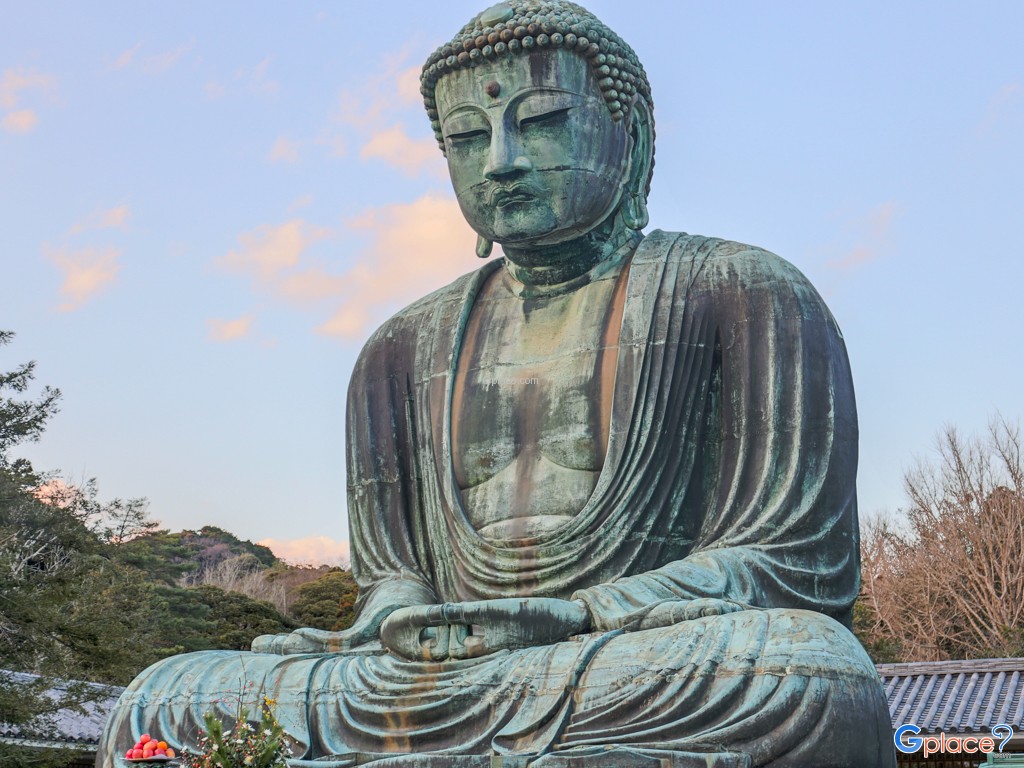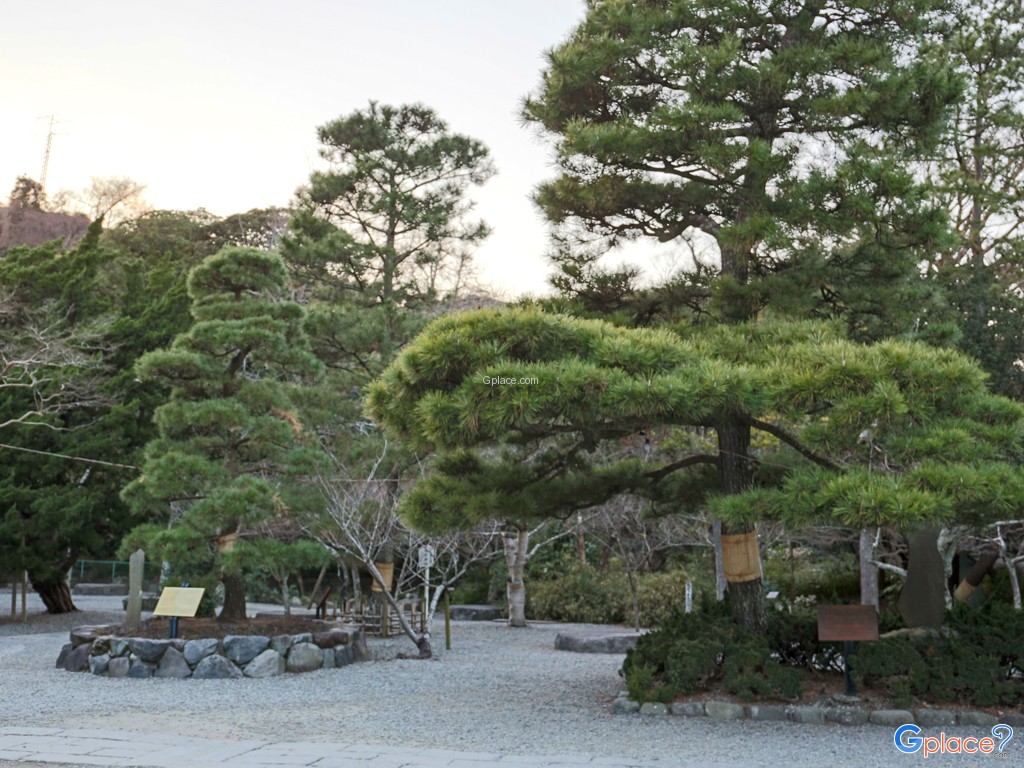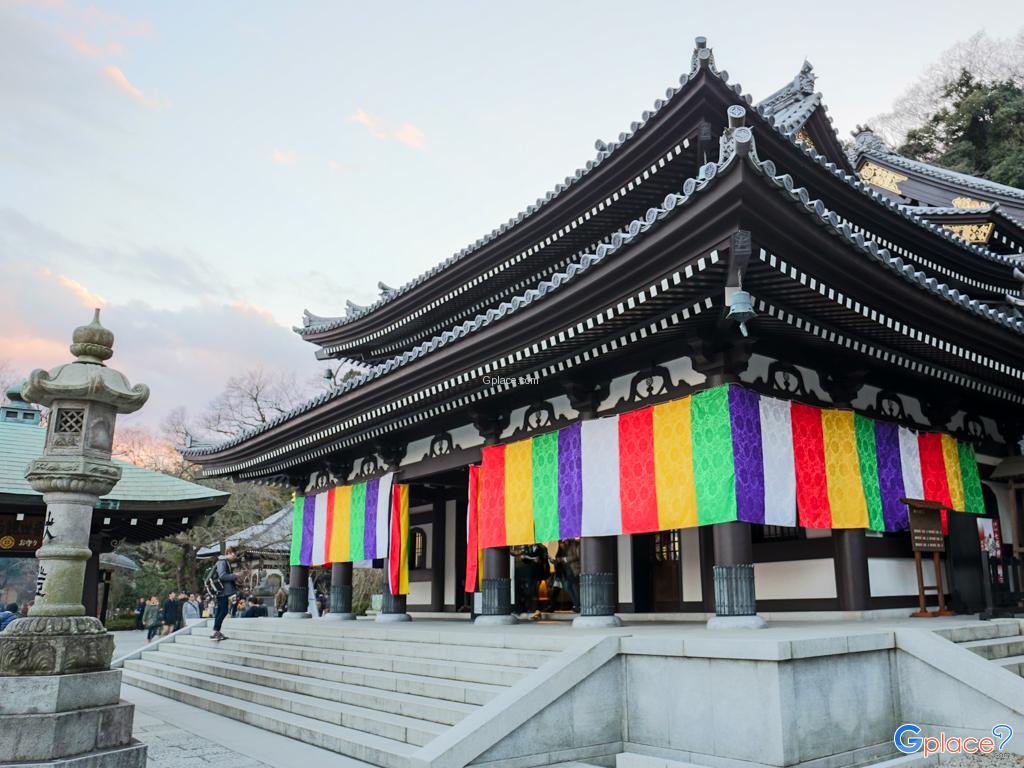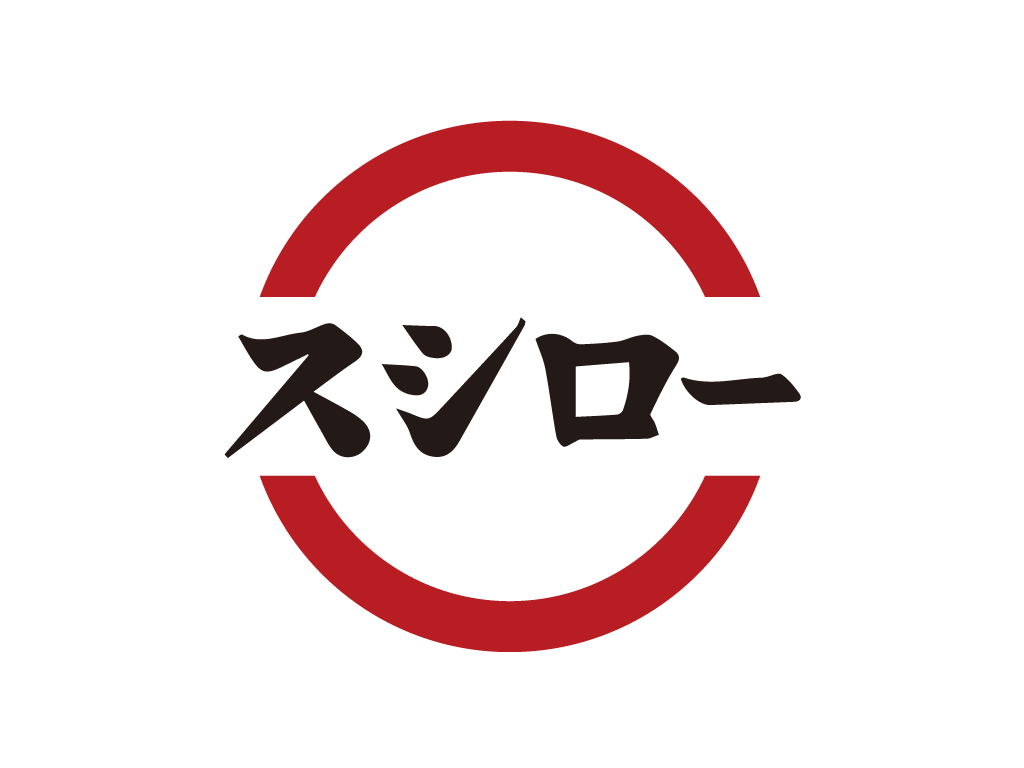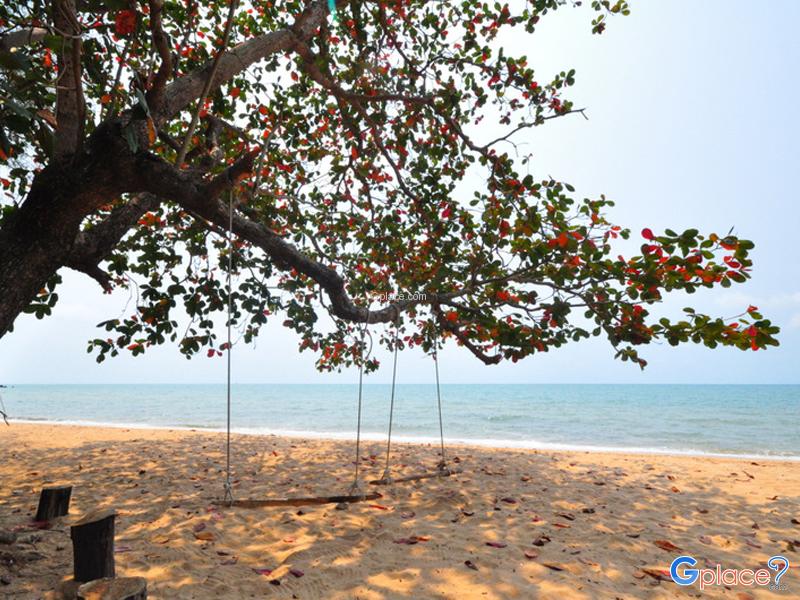“Kotoku-in, an ancient temple with 700 years of history, preserves historical architecture and draws visitors by its beauty and serenity.”
Kotoku-in Temple is home to the Great Buddha of Kamakura (Kamakura Daibutsu), the second largest Buddha statue in Japan. The bronze statue stands at 11.4 meters tall, with a circumference of 29.4 meters and a face length of 2.3 meters. Weighing approximately 121 tons, it exudes a serene atmosphere through the positioning of its hands and eyes. Inside the statue, visitors can climb a staircase that reaches shoulder height_, offering a unique perspective.
The temple grounds feature various stone monuments, including inscriptions by Jodo sect monk Yuten Shonin and poems by renowned Taisho Period figures Kaneko Kunen and Yosano Akiko. Notably, a tree planted by King Prajadhipok (Rama VII) of Thailand can be found here, commemorating his visit, alongside a monument dedicated to former Sri Lankan President J.R. Jayewardene.
The original wooden Buddha statue was destroyed in a storm, leading to the creation of the current bronze statue in 1252. The statue has stood in the open air since the temple’s main hall was washed away by a tidal wave in 1495, with some remnants of the original structure still visible nearby. Over the centuries, the statue has undergone renovations in the early 18th century, after the Great Kanto Earthquake in 1923, and again in 1960 to strengthen it against earthquakes. The statue’s proportions are intentionally altered to create an ideal viewing perspective, possibly influenced by ancient Greek statues transmitted via the Silk Road.
Kotoku-in Temple remains a significant cultural and historical site, offering visitors insight into Japan’s religious heritage and artistic traditions. It is a must-visit for those interested in Japanese history, Buddhism, and monumental sculpture.
How to Get There
Kotokuin Temple is located in Kamakura, Kanagawa Prefecture, not far from Tokyo, but requires some planning for visitors traveling independently.
-
By JR Train + Enoden Line:
From Tokyo Station or Shinagawa Station, take the JR Yokosuka Line to Kamakura Station (about 1 hour). At Kamakura Station, transfer to the Enoden (Enoshima Electric Railway) line and travel to Hase Station (about 5 minutes). From Hase Station, it is approximately a 5-minute walk to Kotokuin Temple. -
By Bus or Taxi:
Local buses are available from Kamakura Station to areas near Kotokuin Temple; schedules should be checked in advance. For convenience, taxis from Kamakura Station take about 5–10 minutes with a fare of approximately 1000–1500 yen. -
By Car:
If driving, take National Route 134 or local roads into Kamakura city. Parking near the temple is limited, so advance planning for parking is recommended.
The temple is also near Hase-dera Temple and Kosokuji Temple, both within walking distance. For hiking enthusiasts, Kotoku-in is accessible via the Kuzuharagaoka-Daibutsu Hiking Trail.
Travel Tips
-
Visit early in the morning or late afternoon to avoid crowds.
-
Wear comfortable shoes for walking and exploring nearby temples.
-
Combine your visit with nearby Hase-dera Temple for a full cultural experience.
-
Be respectful of the temple grounds and the sacred statue.
Admission Fee:
-
Temple Grounds: 200 yen
-
Entry inside the Buddha Statue: Additional 20 yen
Opening Hours:
-
April to September: 08:00 – 17:30
-
October to March: 08:00 – 17:00

















